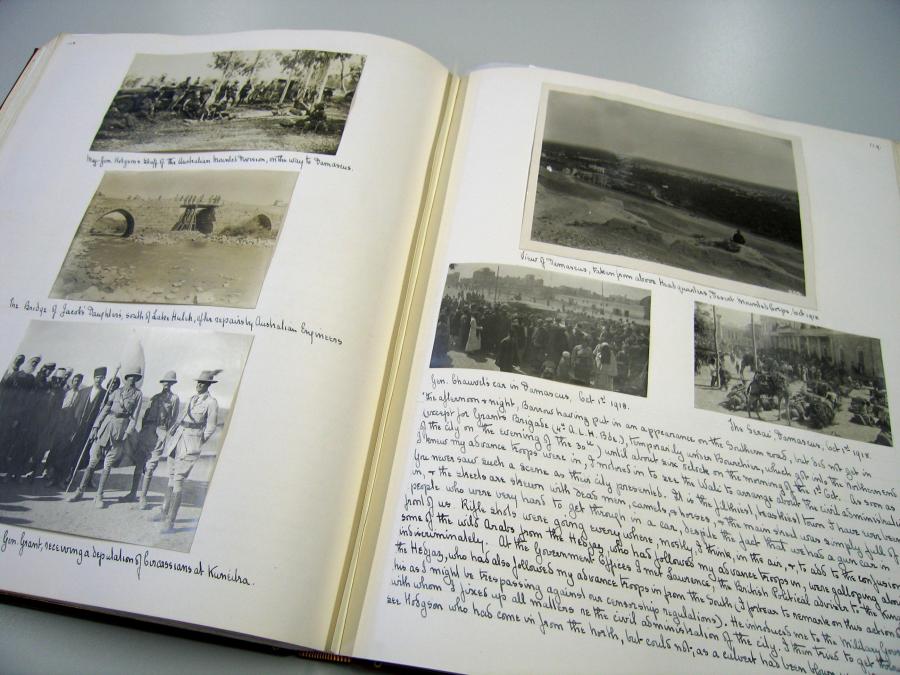Chauvel on the taking of Damascus
James Quinn, official war artist, was commissioned to paint the portrait of Lieutenant General Sir Henry George 'Harry' Chauvel, GCMG, KCB in 1919. ART03340
The papers of General Sir Henry George Chauvel are one of the highlights of the Memorial's written collections.
This collection contains numerous correspondence exchanged between “Harry” Chauvel and his family and also includes two spectacular, large leather bound, gold embossed, scrap books created by Lady Chauvel after the war. The volumes document Chauvel’s military engagements during the war and offer an insight into his actions and thoughts. They contain a selection of his letters, hand transcribed by his wife, as well as photographs, maps, field message notes and news cuttings. The first volume includes a water colour scene of Palestine signed by Will Longstaff and was bound using fine calf from the Chauvel family’s own animals. The second volume was bound by the Memorial in matching style following its donation.

Of interest are the pages documenting the Australian’s entry into Damascus. These include a cutting from The Times on 3 October 1918 announcing the troops of the Australian Mounted Division entering Damascus on the night of 30 September . There are also two telegrams from the 1 October congratulating Chauvel, one from Lieutenant General Sir Edward Bulfin HQ XXI Corps, “21st Corps sends heartiest congratulations on your occupation of Damascus which brilliantly crowns a splendid series of successes”, and one from General Sir Edmund Allenby, “Congratulations on brilliant achievement” and signed “Chief”! Chauvel wrote to his wife on the 3 October about the occupation of the city:
We did not get within striking distance of Damascus until about 1 o’clock on the 30th. We were fighting all round the North, West and South of the city during the afternoon and night, Barrow having put in an appearance on the Southern Road, but did not get in (except for Grants Brigade (4th ALH Bde), temporarily under Bouchier, which got in to the Northern end of the city on the evening of the 30th) until about six o’clock on the morning of the 1st Oct. As soon as I knew my advance troops were in, I motored in to see the Wali to arrange about the civil administration.
He comments on the state of the city and the Hejaz Army entering the city following the Australian forces.
The streets are strewn with dead men, camels and horses, and the main street was simply full of people who were very hard to get through in a car, despite the fact that we had a gun car in front of us. Rifle shots were going everywhere, mostly, I think in the air, and to add to the confusion, some of the wild Arabs from the Hedjaz, who had followed my advance troops in, were galloping about indiscriminately.
His meeting with Lawrence is also mentioned in this letter:
At the Government Offices I met Lawrence, The British political advisor to the King of the Hedjaz, who had also followed my advance troops in from the South. (I forbear to remark on this action of his as I might be trespassing against our censorship regulations). He introduced me to the military governor with whom I fixed up all matters re the civil administration of the city. I then tried to get through to Hodgeson who had come in from the North, but could not, as a culvert had been blown up and there seemed to be only one road, and I had to turn back and go through all the beastly throng again to my Headquarters South of the city. Although it was unpleasant and difficult, the people were most demonstrative and cheered like anything. I eventually had to get some of Lawrence’s wild Arabians to clear the way for me!
